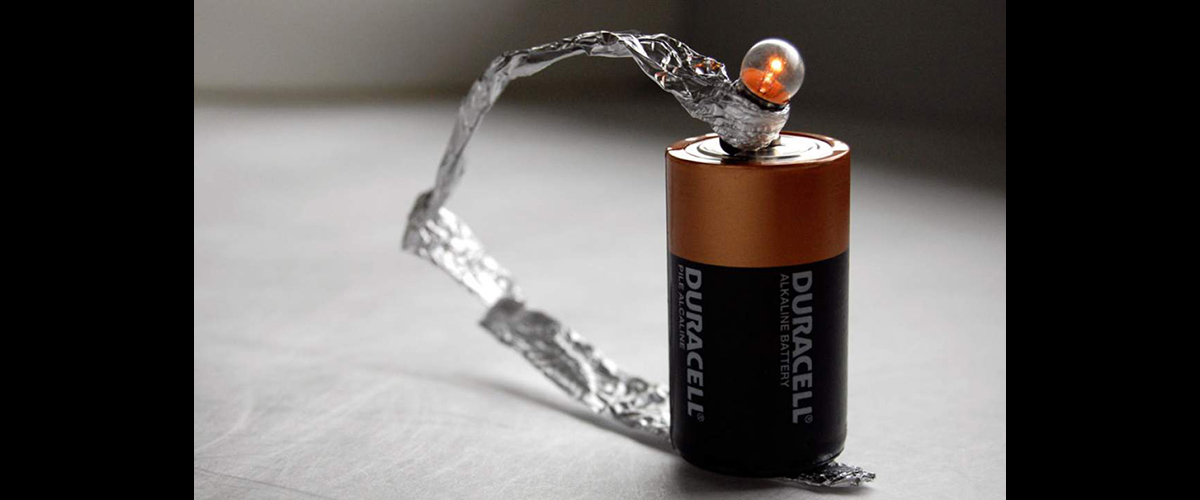
You may think our job is to study magnets and magnetism. But in fact, magnets aren’t so much the ends here as they are the means to discovery.
Our magnets are scientific instruments. Just as a microscope allows us to view details invisible to the naked eye, so do magnetic fields reveal the nature of things – and of the very laws of science that account for them.
Magnets are another way – a unique and powerful way – that basic science can shine a light into the unknown.
How can you "see" things with magnetic fields? You may know that X-ray machines detect broken bones by using electron beams. Electrons and their movement are also the critical ingredient to magnets and their power to see the unseeable.
It all comes down to atoms, the building blocks of matter, and the fact that so much of the universe is governed by the fact that opposites attract (while like things repel). Atoms contain positive and negative particles – protons and electrons. These particles interact with each other, and they interact with magnets, which owe their power to the way the electrons inside them behave. In other words, the protons and electrons in a material under study can, in the presence of a strong magnetic field, react in a way that teaches us something about its properties in particular, or about the properties of matter in general.
Our magnets are cylindrical in shape, with a hollow core running down the center called the bore. That’s where scientists put their experiments, then sit back and watch the data come in.
Some of our magnets are part of larger instruments, such as mass spectrometers (which identify substances by weighing their molecules) and imaging machines (which can see what’s happening inside a living body or other material by exploiting the magnetic properties of atoms).
What sort of questions can you answer with a magnet? To name just a few:
Our magnets are very big and very powerful because stronger magnetic fields mean more data (just as a microscope that magnifies 100 times will tell you a lot more than one that magnifies 10 times).
We need three basic ingredients to keep our magnets fed: Water, electricity and cryogens (liquid helium and liquid nitrogen).
Big magnets require a lot of power to operate. Most of our magnets run on regular electricity – and a whole lot of it (our lab consumes about 7 percent of all the electricity used in the city of Tallahassee!). These are called resistive magnets. These magnets use so much electricity that we can operate only one or two at a time, even with our capacity for 56 megawatts of power. Because a lot of electricity produces a lot of heat, we use a lot of water to keep the resistive magnets cool, which explains the two huge water tanks (with a combined capacity of 4.3 million gallons, or 16.3 million liters) outside the Tallahassee complex.
Our hybrid magnet is in the Guinness Book of World Records.
Some of our magnets run using superconducting materials. These materials do not generate heat when electricity runs through them, but require extremely cold temperatures to create and maintain a superconducting current. And because superconductivity requires temperatures barely above absolute zero (-273 degrees Celsius, or -460 degrees Fahrenheit), we use lots of liquid helium and liquid nitrogen to keep our superconducting magnets cold.
A third type of research magnet combines superconducting and resistive magnets into one hybrid instrument. Our hybrid is the biggest, most powerful magnet in the world generating a sustained magnetic field.
In return for this input of resources, we get an amazing output of about 400 scientific papers a year, cutting-edge research that makes possible better medicines, a healthier environment, stronger and lighter materials, faster computers and more efficient uses of energy.
Scientists measure magnetic strength with two units, tesla and gauss; one tesla equals 10,000 gauss. Your average fridge magnet is 10 gauss. The Earth's magnetic field is about 0.5 gauss (or 0.00005 tesla). A typical MRI scanner features a 1.5 tesla magnet. Our smallest research magnet is 3.4 tesla, and our largest is a whopping 45 tesla – the world’s most powerful magnet (that is, the one that can sustain its field for more than a few seconds).
Now that you understand what the lab is about, you're ready to meet our star magnets. Please return to the main Meet the Magnets page to find out more about these incredible instruments.
For more information, please contact Public Affairs.
Our magnets are scientific instruments. Just as a microscope allows us to view details invisible to the naked eye, so do magnetic fields reveal the nature of things – and of the very laws of science that account for them.
We don't just operate magnets: We make 'em, too. Members of our Magnet Science & Technology group are world leaders in designing and building bigger, better and ever more innovative magnets.
Last modified on 28 November 2022